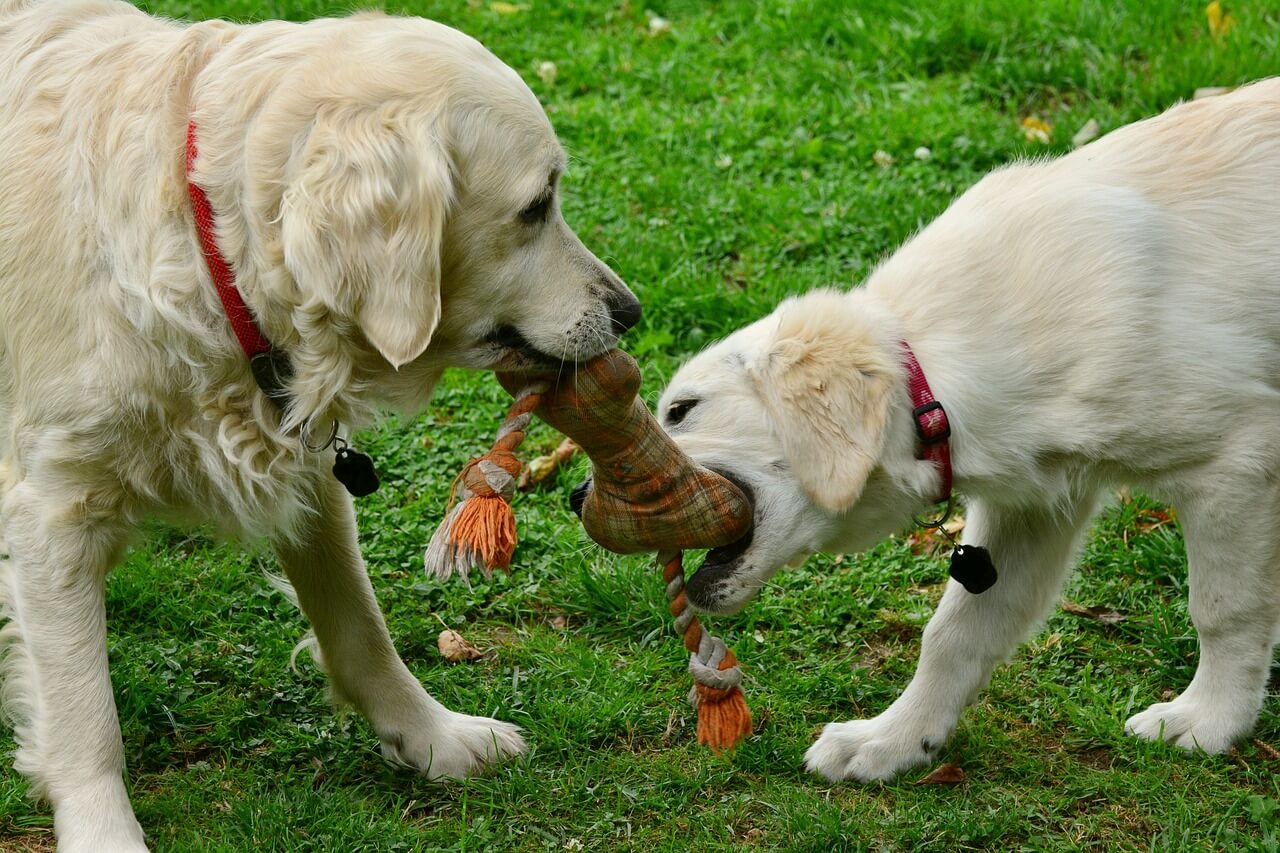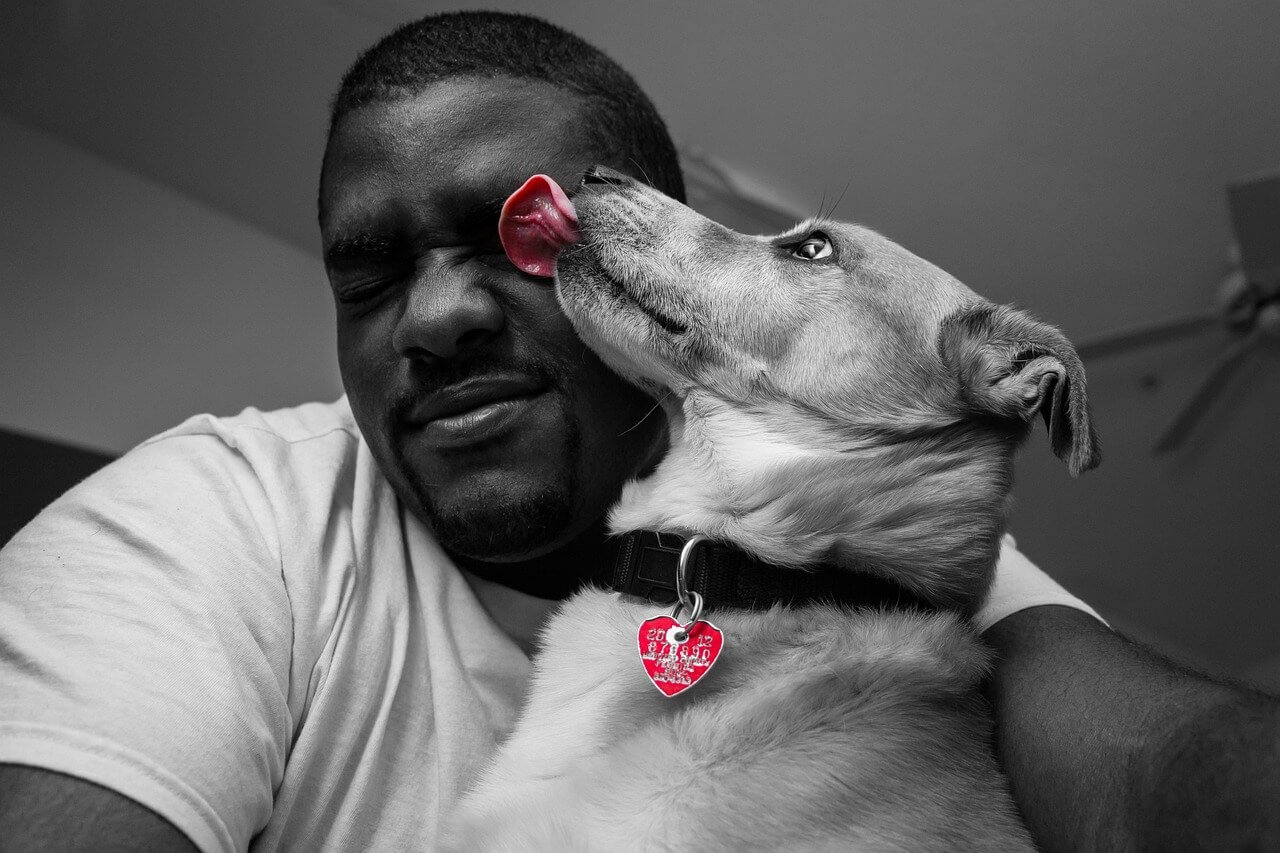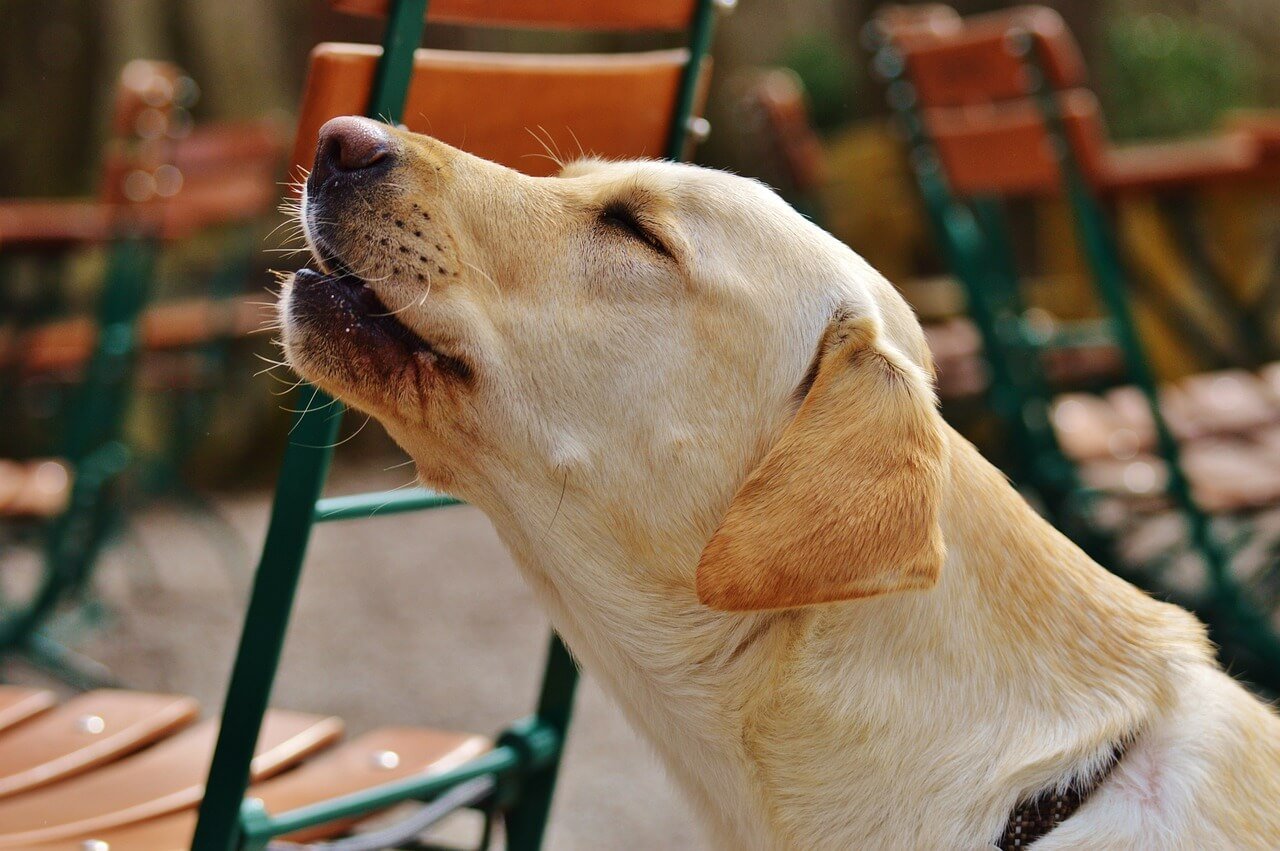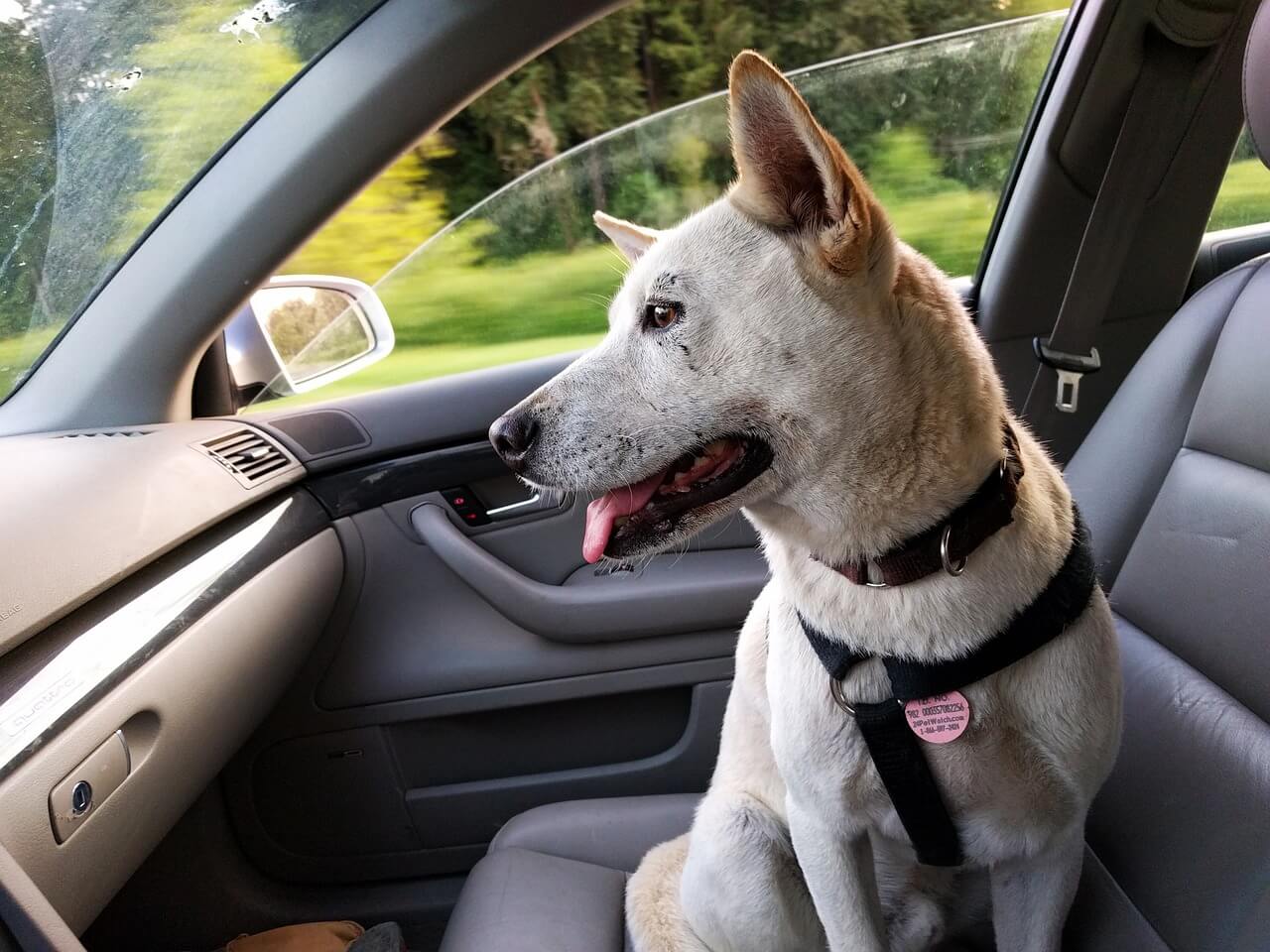If you've landed on this page, chances are you've got a furry little land-shark on your hands, nipping at your heels, hands, or maybe even your favorite slippers. No need to fret you're not, in this alone. We can work together to figure out this puzzle. Puppies, much like toddlers, explore the world with their mouths. And just like kids, they need a bit of guidance to learn what's okay to chew on—and what's not.
Understanding Why Puppies Bite
Got a little nibbler on your hands? Don’t fret—it’s perfectly natural. Puppies explore the world one bite at a time. If you're curious, about why your adorable little furball behaves, like a shark lets unravel the enigma together.
It’s All About Growth: Remember, your puppy is just a baby, and they’re learning with every little chomp. When your pup is teething, their gums hurt, and gnawing on things feels good. It’s not mischief; it’s nature’s way of helping them grow.
The Playful Call for Attention: Those needle-sharp teeth aren’t just for show. Puppies also bite when they’re brimming with energy and want to play. It’s their way of saying, “Hey, I’m here! Let’s have some fun!” Breeds like the affectionate French Bulldog or the smart and lively Poodle might be more inclined to express themselves with their mouths.
A Breed Apart: Speaking of breeds, it’s true that some are more mouth-oriented than others. Take Retrievers, for instance. Both the Labrador and Golden varieties have a soft grip because they’re bred to fetch game. It's not about being aggressive—it’s in their genes!
The Takeaway: While puppy biting is a normal phase, it’s not a trait we want to encourage. Understanding the reasons, behind puppies biting tendencies allows us to guide them towards developing behaviors. Keep reading as we're about to unpack some paw-some techniques to nip that biting habit in the bud.
The Role of Diet and Teething
Every puppy owner has been there: you're petting your adorable little friend, and suddenly, ouch! But before you think it's just naughty behavior, let's chew on this fact – your puppy is probably teething.
Teething Time: Just like human kids, puppies get all their baby teeth, and boy, does it make them want to bite! Around the age of 3 to 6 months, those baby teeth start to fall out to make way for adult chompers. Imagine how that feels – itchy and sore gums all day. No wonder they’ll latch onto anything they can find! That's why it's incredibly important to have the appropriate chew toys readily available. They're much more, than playthings; they serve as aids, for promoting the healthy development of puppies.
Nutrition That Nurtures: Now, let's talk about what goes into those little tummies. A well-balanced diet is about more than keeping hunger at bay – it's about giving those tiny bodies what they need to grow up strong and healthy. Did you know that what your puppy eats can even affect their behavior? It’s true! A good diet can mean a less cranky, more playful pup.
Chew on This: Having a variety of chewable options is key. From chew toys created specifically for gums to vegetables that're safe, for puppies these items can truly save your shoes and furniture from damage. Also keep in mind that these chew toys serve purposes beyond teething—they are excellent, for playtime and training as well!
Biting the Bullet on Biting: Understanding the teething process and providing the proper diet and chewables can make a world of difference in managing your puppy's biting. So, let's make sure those new teeth grow into a mouth that's not biting more than it can bark. Stick with me, and we’ll get through this biting phase together – one chew toy at a time.
Training Your Puppy Not to Bite
Now that we've got a handle on the teething troubles, let's talk training. Training your pup not to bite is like teaching a kid to use a fork – it's all about patience and showing them the ropes.
Bite-sized Lessons: First things first, let’s keep the lessons short and sweet. Puppies have the attention span of a goldfish, so long training sessions are a no-go. A few minutes here and there is just right. And hey, it’s also about being as gentle as possible. We’re not scolding here; we’re guiding.
Positive Pooch Psychology: Positive reinforcement is the name of the game. When your pup plays nicely without biting, that’s your cue to shower them with praise, treats, or their favorite game. It tells them, “Good job, buddy! Keep doing that!” And it works wonders with all pups, from the eager-to-please Golden Retriever to the smarty-pants Poodle.
Consistency is Key: Just like your favorite TV show, consistency is crucial. Stick to the same commands and rewards so your pup isn't trying to guess what you want. Whether you're dealing with a spunky French Bulldog or a sprightly Labrador Retriever, they all need to know the rules of the game.
Puppy-Proofing the Playtime: Always have a toy within reach during playtime. If those little teeth find their way to your hand, offer the toy instead. It’s like saying, “Chew this, not that.” This way, your pup learns what’s for biting and what’s not.
Social Skills for Small Furries: Don’t forget about socialization. Puppies learn a lot from their furry friends, including bite inhibition. When they play with other dogs, they quickly learn that biting too hard ends the game abruptly.
The 'Ouch' Technique: If your pup does land a bite, let out a loud “Ouch!” and stop the playtime. It's similar to how they’d learn if they bit a sibling too hard during play – the fun stops, and they think twice next time.
The Bite Stops Here: With these tips, you’re on your way to a bite-free future with your four-legged friend. Remember, every pup can learn the “no bite” rule – it just takes some love, understanding, and a handful of treats!
Exercise and Mental Stimulation
All right, let's get moving! Exercise and mental stimulation aren't just for getting those adorable puppy wiggles out. They're also secret weapons in your battle against biting.
A Tired Puppy is a Good Puppy: Ever noticed how biting episodes often happen when your puppy is bursting with energy? That's because pups need to burn off that puppy power somehow. Regular walks, play sessions, and maybe a little game of fetch with a Dachshund can do wonders. Not only does this tire them out physically, but it also gives them less gumption to gnaw on you.
Brain Games for the Win: But what about those rainy days when a walk is off the table? That’s where brain games come in. Puzzles and training sessions that make your puppy think hard are fantastic. They tire out their brains, so there's less mental energy to put into naughty nipping. Your Siberian Husky might love a challenging game that requires them to solve a puzzle for treats.
The Right Toys Make All the Difference: Exercise is great, but what about when you're not around? That's where the right toys come into play. Chew toys, interactive toys, and even a well-stuffed Kong can keep your pup entertained and away from your hands.
Structured Playtime: Setting up structured playtimes can also help your pup learn when and how to use their energy. It's like having recess; they get to look forward to it and expend all that puppy enthusiasm in one go.
Social Butterfly Pup: Lastly, don't underestimate the power of playdates. Socializing with other dogs helps your pup learn the ropes of doggy etiquette, including the all-important lesson that biting is not okay.
The Lowdown: With the right mix of physical activity, brain teasers, and social interactions, your puppy will be too busy being a well-behaved whiz to even think about biting. Moving on lets discuss how you can create an environment for your puppy that encourages behavior than a frenzy of chewing.
Health Checks and Behavioral Understanding
Sometimes, a nip isn't just a nip. It's a clue that your little buddy might not be feeling their best.
Spotting the Signs: It’s important to keep a close eye on your furry friend's behavior. If biting comes with a side of whimpering or if your usually playful pup is now growling, it might be time for a health check. Discomfort can cause the sweetest pups, from the tiny Yorkshire Terrier to the mighty Rottweiler, to become a bit snappy.
Doggy Dialogue: Understanding your dog's body language can be as essential as learning a foreign language. Is your dog's tail wagging or are their ears pinned back? These cues can tell you if your pup is feeling playful or stressed. Brushing up on dog body language can help you understand what your pooch is trying to say.
The Scoot Scoop: And here's a weird one – if your puppy is scooting their behind across the floor, it might be more than an odd quirk. It could be a sign of discomfort due to full anal glands, which is as uncomfortable as it sounds.
The Comfort of Coziness: Creating a comfortable environment can help soothe anxiety that leads to biting. This includes everything from a calming dog bed for a peaceful rest to a peaceful corner they can retreat to when the world feels a bit too much.
The Wellness Connection: Just like us, a puppy's overall well-being affects their behavior. Regular vet check-ups, a nutritious diet, and a warm, loving home environment are the foundation of a happy, well-behaved pup.
Putting It All Together: Taking care of your puppys wellbeing, being aware of their body language and making sure they are comfortable can greatly minimize instances of biting. Remember these suggestions. You'll be, on the path to a peaceful bond, with your adorable furry companion. Next we will discuss the accessories that can help redirect those puppy nips.
Puppy-Proofing with the Right Accessories
You've got the basics down, so let's gear up! Having the accessories can have an impact, on effectively teaching your puppy what and where to chew instead of going after your beloved sneakers.
Choose the Right Chew: When selecting chew toys, consider durability and safety. A toy that's too hard might damage your puppy's teeth, while a too-soft one could be destroyed and swallowed, leading to a not-so-fun trip to the vet. The dog chew toys section at FunnyFuzzy has a variety of options to keep those jaws busy safely.
Bedding Down: After a good play session, your pup will need a solid nap. A comfortable place to rest is crucial for their well-being. A calming dog bed can be a sanctuary for your little one, providing a personal space where they can relax and not feel the need to guard or bite.
Travel in Style and Safety: Hitting the road with your pup? Ensure their travel experience doesn't lead to anxiety and subsequent nipping. Secure travel accessories, like a dog car seat or a travel dog bed, can provide that secure feeling they need to stay calm and bite-free.
Traversin de voyage pour chien de taille moyenne et grande taille, lit de siège arrière de voiture

€121,95
€232,95
RAISONS D'AIMER NOTRE LIT DE SIÈGE ARRIÈRE DE VOITURE Triple protection Le siège auto pour chien est doté de trois harnais qui peuvent être accrochés à l'animal, au dos ou au collier pour sécuriser l'animal dans le siège auto et… read more
Keep 'em Covered: Dog blankets and mats are not just for keeping your pup warm; they can also be a tool for teaching boundaries. A designated dog mat signals to your pup that it's their spot to relax and chew on a toy, not your carpet.
Couverture pour chien en forme de feuille
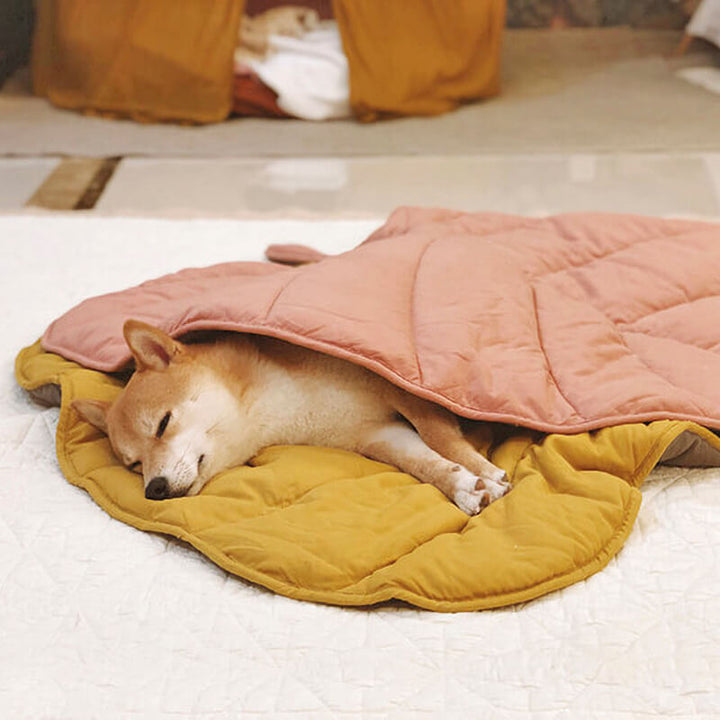
€28,95
€53,95
Découvrez le tapis pour chien FunnyFuzzy Leaf. Élégant, confortable et parfait pour votre animal de compagnie. Disponible en plusieurs couleurs et tailles pour s'adapter à votre décoration intérieure.… read more
The wonders of toys; Interactive toys are a way to keep those sharp teeth engaged and occupied. Check out FunnyFuzzy's selection of interactive toys for options that engage your puppy's mind, encouraging them to chew on the toy and solve puzzles instead of gnawing on your hand.
Accessorize Wisely: Every accessory you choose for your puppy, from harnesses and leashes to dog bowls and feeders, should promote good behavior and safe exploration. Always keep in mind that the aim is to ensure every interaction with your puppy is both positive and educational.
Conclusion of the Gear Guide: With these tools at your disposal, you're well on your way to redirecting your puppy's biting behavior in a positive, playful manner that benefits you both. In the following section we will conclude with some reflections and advice to consider as you and your adorable puppy embark, on a journey of growth.
Conclusion
As we reach the end of our exploration of biting it's important to keep in mind that this stage is one aspect of your furry friends journey into adulthood, as a dog. With the right approach, it's a phase you both will come through with flying colors.
Read More:https://funnyfuzzy.com/a/blog/how-to-express-your-dogs-anal-glands-safely

